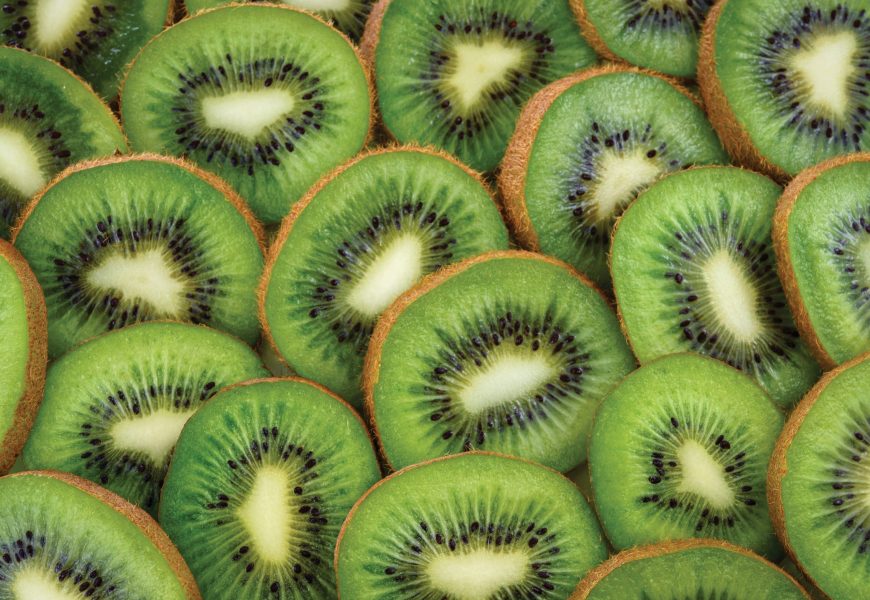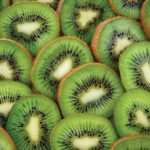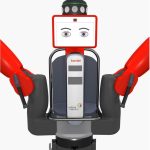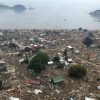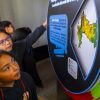Starting from a need of the industry, the team led by the researcher from UdeC’s Faculty of Agricultural Engineering, Rudi Radrigán Ph.D., developed a piece of automated equipment that allows classifying fruit by its firmness on the packing process line, a key tool for the logistical planning of exports. The prototype has already been tested and negotiations on the licensing of its patent are currently being negotiated with a French company.
By Roberto Fernández Ruiz/ robertofr@gmail.com / Photographs: Rudi
Radrigán y Roberto Fernández
The need to improve the competitiveness of the kiwi industry, demands addressing challenges to improve fruit quality classification and increase process automation as a response to a labor shortage.
Starting from a need identified in the export company Copefrut, the team led by the researcher of the Universidad de Concepción’s Faculty of Agricultural Engineering (FIAUdeC) and the Director
of the Agro-industrial Technological Development Center (CDTA), Rudi Radrigán Ewoldt Ph.D., developed an innovative system which, using ultrasound, allows automatically classifying fruit by its firmness on the packing process line.
As Erick Farías, Copefrut’s Post-harvesting Agronomist recalled, the project arose from the company’s concern to determine the hardness of the columella or “kiwi heart”. However, the interest turned towards the evaluation of the pulp’s firmness.
As Professor Radrigán said, “We were working with ultrasound, so we decided to test this technology and it had very good results. We then saw that we could also determine turgidity (firmness), density, and diameter”, he added.
For the industry, firmness is a key aspect of export logistics. However, the selection systems used have a high error rate and are normally manual. For this reason, Dr. Radrigán, along with Sixto Rojas, began to work on the solution. “We developed the test and took it to the process line, where we managed to determine the properties at a speed of 60 pieces of fruit per second”, he mentioned.
The researcher revealed that the project was never awarded external financing, as it was not selected in any call. “We did everything with the resources of CDTA’s Engineering Unit. We set up our first piece of equipment in 2010. When we had results, we were chosen in a patent call of the Transfer and Licensing Office (OTL-UdeC)”, he described, and he added that “now that the technology is developed, we have had support for its sale through the Apta Hub”.
“It has already been tested at an industrial level. What comes now is the licensing. For this we are in conversations with the French company, Maf Roda, which is dedicated to manufacturing fruit
calibrators”, he anticipated.
The equipment
He explained that the system comprises a computer with data acquisition software and an oscillator with ultrasound crystals. “When fruit goes through, an impulse is sent, a microcontroller analyzes the response, and the sorting software decides to keep or change the lane the fruit is on, depending on the input quality parameters”.
Dr. Radrigán commented that, generally, between 15% and 20% of the fruit is poorly classified in packing, with a high margin of error when compared to the 0.06% error rate with ultrasound.
In this vein, Erick Farias said that the great benefit of the equipment is that it allows segregating fruit by firmness and having a more uniform product, to then define which market to send it to, a trip to Brazil takes 10 days, while a ship to the Middle East takes between 55 and 65 days. “We need to be certain that the fruit can remain in good condition on those long journeys, so we can send those in not such as good a condition to closer markets, like Latin America, and those with less firmness can even be for the internal or agro-industrial market”, he commented.
Farias acknowledged that today, to a great extent, the selection is done manually, and it depends on line workers who feel the fruit. “We have some sorting systems that by default remove a part, but generally they only remove extremely soft fruit”, he mentioned. Finally, Dr. Radrigán predicted that “In the short term, plants are going to have ultrasound units to detect fruit quality”, and not just kiwis, as he assured us that this system works for many other types of fruit.
For more information: Dr. Rudi Radrigán rradriga@udec.cl
Last modified: 29 de agosto de 2025
